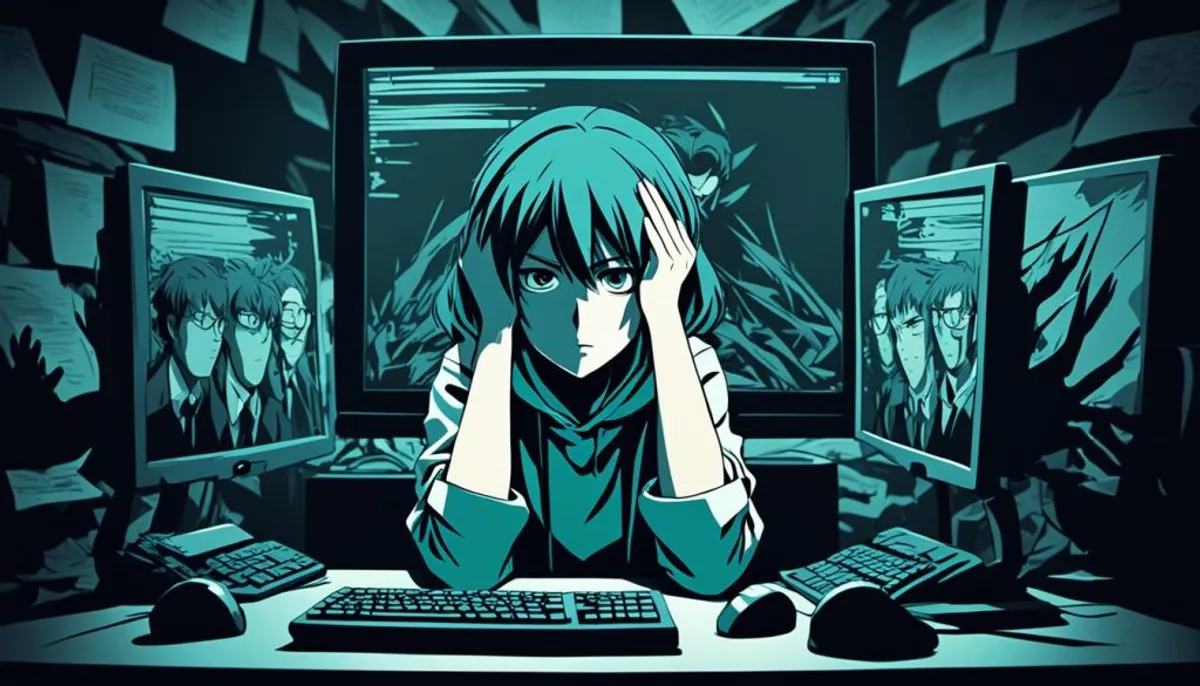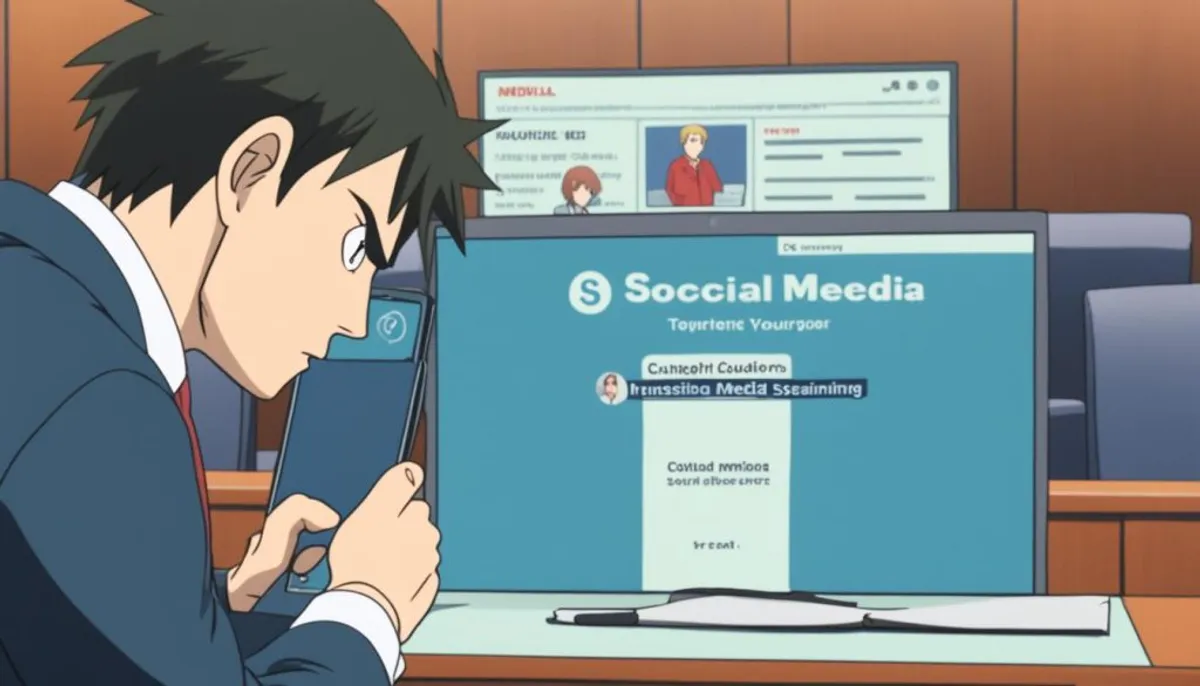If you’re getting badly harassed online, there might be something you can do about it. You can ask a judge for a restraining order to stop this harassment. Restraining orders help stop online bullying. But to get one, you’ll need proof of the nasty stuff online and how it’s hurting you. You must show you’re really getting hurt and it wouldn’t stop without the order.
A temporary restraining order (TRO) only lasts for a short while. It’s like a quick fix that gives someone being harassed time to get permanent help. To get a TRO, you must prove it’s needed. It’s important to prove there’s more than just mean words online. You need to show there’s something serious happening that needs to stop.
Key Takeaways
- Restraining orders can provide a legal remedy against persistent online bullying and harassment.
- You must present evidence of abusive conduct and the harm caused to obtain a restraining order.
- Temporary restraining orders (TROs) offer emergency relief while you pursue a permanent order.
- Courts are hesitant to restrict speech, so you must demonstrate you are seeking to limit conduct, not expression.
- The burden is on the individual filing the complaint to show a restraining order is necessary.
Understanding Social Media Harassment
Harassment can happen in many ways, both online and offline. If it happens online, it brings special worries. In New Jersey, getting harassed online, or cyber harassment, is against the law. It’s seen as a kind of domestic violence.
Definition of Online Harassment
Harassment is like a form of domestic violence. It can be sending messages at bad times, using bad language, or anything that might annoy or scare someone. This includes threatening to hurt someone, touching them in a bad way, making them afraid, or bothering them a lot. These bad actions can happen face-to-face and online. Cyber harassment is when someone harasses another online with any device or via a social site. To combat this, utilizing deep analytics for social media can help identify patterns of harassment and provide insights for prevention.
Types of Abusive Online Behavior
Bad communications may threaten to hurt someone or their things. They might share bad or dirty stuff about someone to hurt or scare them, making threats against a person or their property.
Impact of Cyberbullying and Online Abuse
Cyberbullying and online abuse can really hurt people. It can make them feel stressed, anxious, or even get physically ill. People who are harassed online might feel alone, weak, and scared that it will happen again. This can badly affect their happiness and how they use social media and the internet, including their engagement in political activism on social media.

can you get a social media restraining order
In New Jersey, people can ask for orders against cyber harassment. If someone requests a restraining order for online bullying and the court agrees, a TRO is given. A TRO is a temporary action. Then, a court date is set. At this hearing, the court decides if the TRO should become an FRO, a Final Restraining Order.
Eligibility Criteria for Social Media Restraining Orders
To get a restraining order online, the person asking must show: the bully’s actions could hurt someone or their stuff; the bully sent bad stuff to scare or hurt someone; or the bully threatened to do bad things. These points must be proven for the court to consider the request.
Evidence Required to Obtain a Restraining Order
If a restraining order is needed, the abuser can’t contact the victim, even on social media. The one asking for the order needs to show proof of the bad behavior. They must also show that without the order, they would continue to get hurt.

Legal Processes and Enforcement
Getting a temporary restraining order (TRO) is the first step to stop online bullying and harassments legally. A TRO is an order from a judge right away, without a full court date. It gives quick help until a long-term solution is figured out. The time a TRO is valid can change, but often it lasts until a hearing.
Steps to Obtain a Temporary Restraining Order
If you deal with bad online harassment, you must show strong proof. It should prove the harassing has happened many times and hurts you. This proof is key to ask for a TRO that stops the online abuse. The victim needs to collect any proof that shows the harassment won’t stop without the court’s help.
Extending a Temporary Order to a Permanent Restraining Order
Later, the court has a hearing to decide if the TRO should be longer. In this hearing, the victim gives more proof of the risk and the need for a longer legal guard. The judge then decides to extend the TRO into a permanent order or not.
Consequences of Violating a Social Media Restraining Order
If the harasser breaks the TRO, the victim should tell the police and the court quickly. The harasser might face civil or criminal actions. In the case of criminal charges, they might even go to jail. Civil law can make the judge tighten the restraining order too.
Conclusion
Restraining orders help stop bad and repeated online attacks. If someone is being really mean online to you, legal help is available. However, there are also free speech concerns that must be considered in these situations. You might get a judge to make them stop and not bother you anymore.
Courts don’t always block free speech, but they can help against bad online pestering. It’s smart to find a good lawyer fast. They can help you understand and get a restraining order on social media.
Taking action and using the law can make you feel safe online again. If you show the right proof, a restraining order can be a big help. It stops continuous harm and keeps you safe on the internet, creating global connections through peperonity.
FAQ
Can you get a social media restraining order?
Yes, you can ask a judge for a restraining order to stop online bullying and harassment. You need to show strong proof of the harm the harasser is causing.
What is the definition of online harassment?
Online harassment in New Jersey is a type of domestic violence. It’s when someone uses an electronic device or social media to bully or scare another person.
What types of abusive online behavior can be considered for a restraining order?
Threatening someone or their property is one type of abuse that may lead to a restraining order. It also includes sending inappropriate content to hurt or scare someone. Additionally, harmful content prevention is crucial in addressing these issues. Threatening to harm someone or their property is also not allowed.
What evidence is required to obtain a social media restraining order?
To get a restraining order, you must show the harasser’s actions led to fear, emotional harm, or a threat or actually committing a crime. Bring proof of the harassment and its effects.
What are the steps to obtain a temporary restraining order?
For a TRO, you need to show that you’ve been repeatedly hurt by the harasser’s actions. A judge can give this order quickly, before a full court case, to protect you temporarily.
What happens if the perpetrator violates the restraining order?
If the harasser breaks the restraining order, alert the authorities. They might face serious consequences, such as the order being made stricter or going to jail.
RelatedRelated articles



